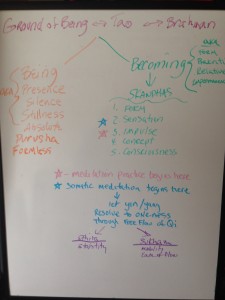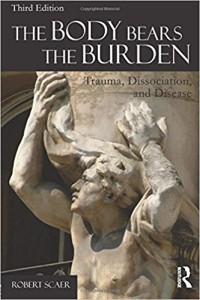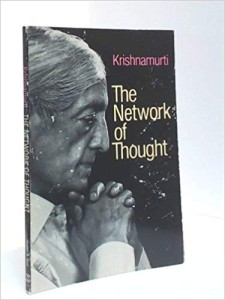As I write this in early July, I am now back in Ojai, trying to rebuild my core essence (Jing), getting ready for the challenges of the chemotherapy series I will begin in the fall. I was surprised at how subtly exhausting the radiation treatments were. On one level I feel fine, but at a deeper level somewhat empty. I’ve just gotten back in the pool which is helping, as is the assistance of my expanding body work team, and the integration and refinement of the three Taoist treasures, jing, qi and shen through work with the microcosmic orbit, fish body orbit, and the thrusting vessel.
Of course the ultimate resource is resting in the unfathomable, mysterious Tao, or, to simplify, ‘Stillness’. ‘Remembering’, re-minding myself to return my attention here, moment to moment is the core practice. And, the first evolute of ‘creation emerging from mystery’, the relational unifying field of unconditional love, may be even more important in healing as it permeates all forms at all levels.
 What was extraordinary about Hope Lodge, my home in Boston during the radiation, was the concentrated strength of the relational field spontaneously channeled by the residents. With forty cancer patients, with differing levels of health and intensity of treatment, and an almost equal number of caregivers living in a small community, there was a lot of emotional energy. But universally acknowledged by all was how powerful the field of unconditional love was. There was a lot of turnover of the residents, but the field was amazingly self sustaining. New residents were embraced, and almost everyone who could, participated, in both large and small ways, in the building and sustaining of the field. Hope Lodge, the building and staff was the constant container, throwing us all together for various meals, movies, Bruins games and other events.
What was extraordinary about Hope Lodge, my home in Boston during the radiation, was the concentrated strength of the relational field spontaneously channeled by the residents. With forty cancer patients, with differing levels of health and intensity of treatment, and an almost equal number of caregivers living in a small community, there was a lot of emotional energy. But universally acknowledged by all was how powerful the field of unconditional love was. There was a lot of turnover of the residents, but the field was amazingly self sustaining. New residents were embraced, and almost everyone who could, participated, in both large and small ways, in the building and sustaining of the field. Hope Lodge, the building and staff was the constant container, throwing us all together for various meals, movies, Bruins games and other events.
Much greater then the sum of the parts, the collective experience touched everyone. It wasn’t something the be figured out. It was a flow of energy that was just there, touching you deeply. Cancer puts you right in touch with the ultimate questions of life and death and opens the portals to unconditional love. And now after being away for over a month, I miss it. It was a truly unique environment. My lesson is to create that relational field within myself, so each of my ‘parts’ contributes unconditional love to the whole, and especially to the skeptical and wounded parts who may not have a clue. And also find ways to awaken this out in the world as well.
In a similar way, over the last year, and especially after the word about the prostate cancer got out, another, less physically contained relational field emerged with me at the center. Friends from my neighborhood growing up in Braintree, MA, from high school and college, from the yoga world, from Ojai, relatives, even people I barely knew, all reached out to me in differing ways, letting me know I was on their heart radar. My name was brought up in churches around the country! It has been great reminder how we all are unconditional love at the core of Being. This is easy to forget when living in a world driven by greed, fear and ignorance, but in spite of the insanity of the world, all of creation is fundamentally unconditional love, including the aberrant aspects that keep showing up in the news.
It is through the Stillness of Being and the relational field of unconditional love that the collective awakening is proceeding and evolving. If you look closely, you will find that all spiritual teachers are channeling the same insights. The language maybe slightly different, and the ‘techniques’ used in the different traditions to get you started may vary. But ultimately, ‘Resting in Stillness’ and tapping into the unbounded spring of unconditional love are the yang and yin, the masculine and feminine sides of the collective awakening.
What is awakening? All of Creation is awakening. Wholeness is Awakening. And we are all embedded in the multi layered fields of this on-going process. And the human mind, individually and collectively as a macro-field effect, is constantly sending up smokescreens of distraction to keep us from realizing what is happening right under our noses, so to speak. Illusion, delusion, confusion, ignorance, and any others words we may find to describe this, all point back to how unhealthy skandhas, arising as a reaction to the terrifying shock of emerging into form, are at the center of the on going delusion.
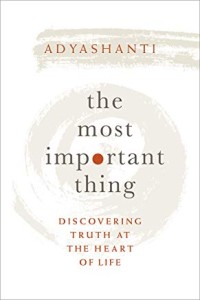 My favorite spiritual teacher and go-to guy for insight into the cutting edge of the collective awakening, Adyashanti, addresses this directly in a chapter in his latest book, ‘the most important thing’. The chapter is entitled ” The Dirty Little Secret of Spiritual Practice”, and begins this way.
My favorite spiritual teacher and go-to guy for insight into the cutting edge of the collective awakening, Adyashanti, addresses this directly in a chapter in his latest book, ‘the most important thing’. The chapter is entitled ” The Dirty Little Secret of Spiritual Practice”, and begins this way.
“The dirty little secret of spiritual practice is that confronting the true nature of our self can be terrifying. For those of us who engage in spiritual practice, it is common to struggle with facing our existential fear. This is not the kind of fear that is necessarily derived from the past or from a traumatic event; it comes from a place inside of us. It is that sense that within consciousness that we have met an immensity of the unknown or the infinite, and in our fear we grasp onto our egos.”
Adya goes on the describe the three general manifestions of ego-grasping, which interestingly enough, correspond to the three dantiens as well as the skandhas. The first is conceptual, where our self sense is composed of images and ideas, beliefs  and judgments. This ‘me’ that lives in our heads roughly corresponds to skandhas three, four and five.
and judgments. This ‘me’ that lives in our heads roughly corresponds to skandhas three, four and five.
The second, (Adya calls it more interior) is the emotional, centered in the chest. Here, our self sense comes from our feelings and the whole spectrum of emotions: positive, negative and neutral. As these are embodied in a way that the abstract conceptual level is not, that is, in a more interior and older region of the brain, this level can seem real, even if we have awakened from the conceptual level of ego. Skandha 2, known as vedana or feelings in engaged here.
The inner most ego center, associated with the primal terror of skandha 1, is according to Adya, centered in the lower dantien. “At the gut level, this ego is the experience of a contracted void, or a contracted state of emptiness. For this contraction to give way, so that we may be free and know God, we must access something deeper and more fundamental than instinct. In Zen, this is called “the gateless gate that we must pass through as we reach spiritual milestones or shifts. It is “gateless” because all that is happening is that contractions are released, as there was never anything there to begin with – we created the gate in our minds – and we will be annihilated, but not in the way we fear we might. Once we have passed through the gateless gate, once we have unclenched the fist of rudimentary ego, we can access something deeper than instinct and go beyond existential fear.” There is a lot more form Adya on this but you’ll have to get the book!
Those familiar with Patanjali may recognize this as abhinivesha, the last of the five kleshas described in the Sadhana Pada: (Vyasa, in his commentary to II-9, offers that abhinivesha infers previous deaths and reincarnation.)
II-9 svarasa-vaahii vidusho ‘ pi tathaaruudho ‘bhiniveshah
Fear of death affects even the wise; it is an inherent tendency.
Whether wise or foolish, we all begin at skandha 1 and have to navigate the ‘gateless gate’. Because we are all going through this simultaneously (the collective awakening), we call all support each other in this process on unclenching. As somatic practitioners, we are already familiar with how tissues hold patterns of tension and how we can use breathing, subtle micro-movements and leverage to help let go. A good body worker can also disentangle regions hard to find on our own.
And often life provides its own surprises. Hospitals have always given me the heebie-jeebies, possibly as part of my pre-natal ptsd, also now amplified by the cancer. So of course I had to go to Brigham and Womens Hospital on a daily basis for nine weeks. Great meditations and observations on the nature of belief systems and fear, and on how, in spite of the seemingly chaotic nature of the place, the underlying energy everyone working there was love. My skeptical cells began to soften a bit. Still a long way to go, but a good start.
Speaking of a long way to go, the day after I returned to Ojai, my neck went into acute spasm and stayed out for a week and a half. But, this mini crisis led to more new revelations and a new friend. I was able to discover a wonderful upper cervical chiropractor in Ventura who has opened new perceptions on the skull – C-1 region which as expanded my sense of how the Governing and Conception vessels interact at the floor of the skull. Funny how the collective awakening process works in real time!! Wow!
In the next post I will go into some ‘yoga nerd’ detailed notes on ways to dive more 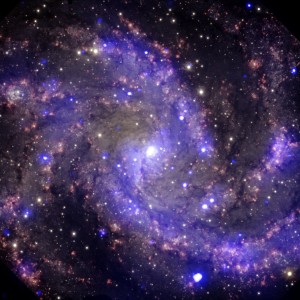 deeply into some of the points along the micro-cosmic orbit. Keep resting in stillness. Keeping bringing love into the world. Be aware of what is happening collectively and do what you can to make the world a better place, one breath at a time. The whole Universe is supporting you!
deeply into some of the points along the micro-cosmic orbit. Keep resting in stillness. Keeping bringing love into the world. Be aware of what is happening collectively and do what you can to make the world a better place, one breath at a time. The whole Universe is supporting you!
Speaking of the Universe, this is ngc.6946, also known as the ‘Fireworks Galaxy, part of the Virgo Supercluster of galaxies, a mere 22.5 million light years away. The name “Fireworks comes from the fact that this galaxy produces an unusually large number of supernovae. Apropos, a belated happy 4th of July to you all.


